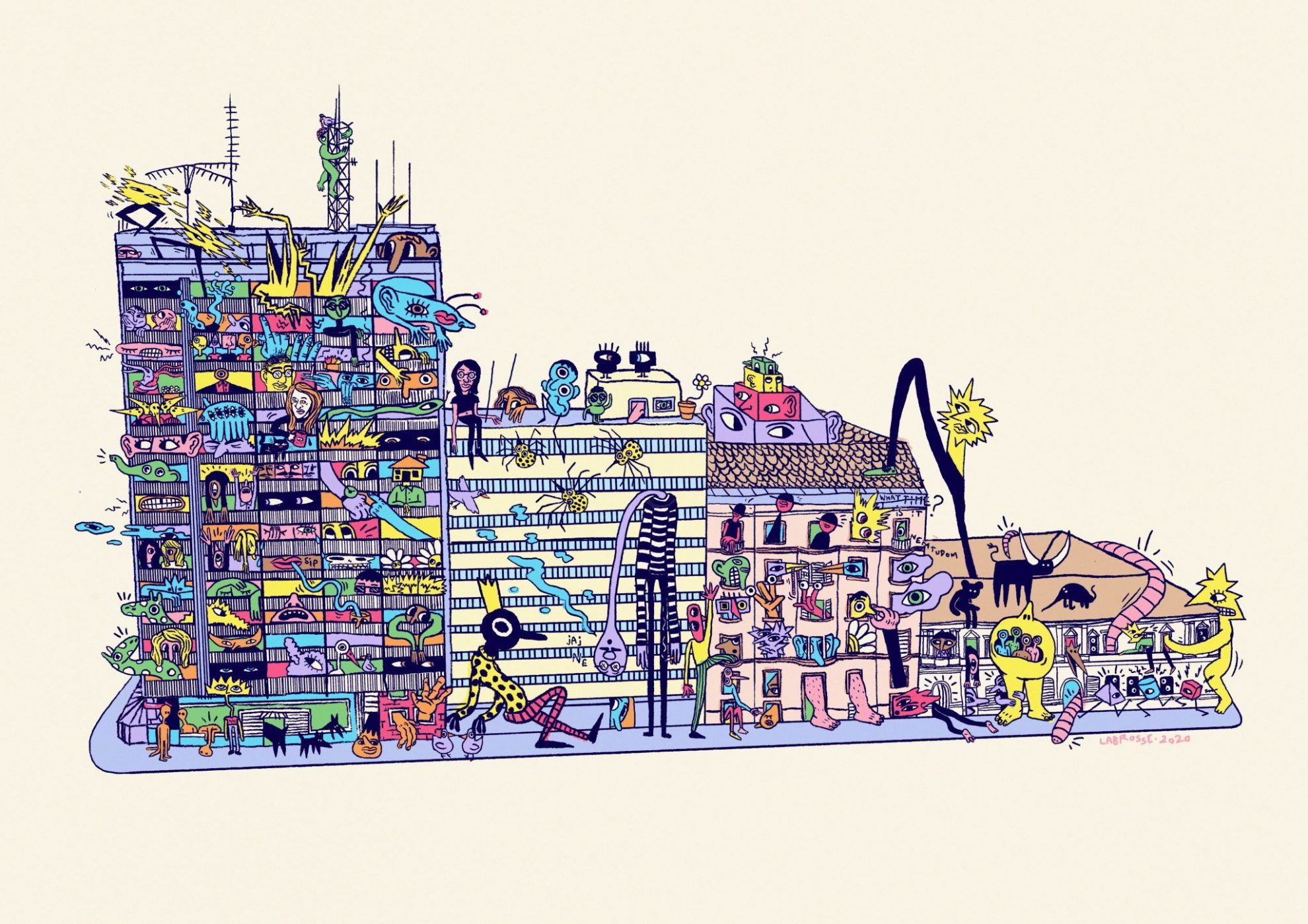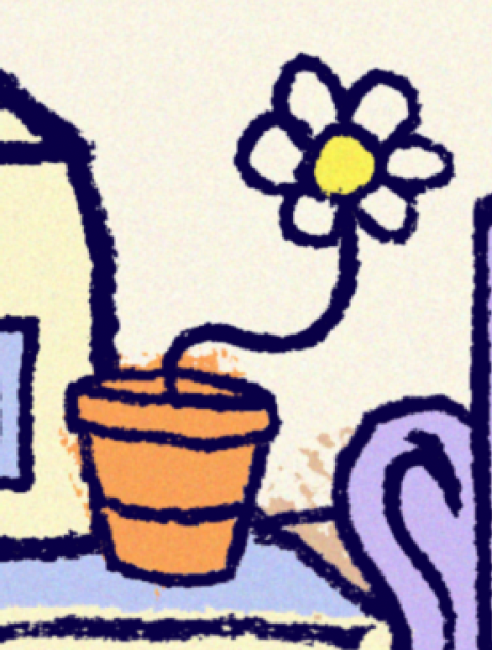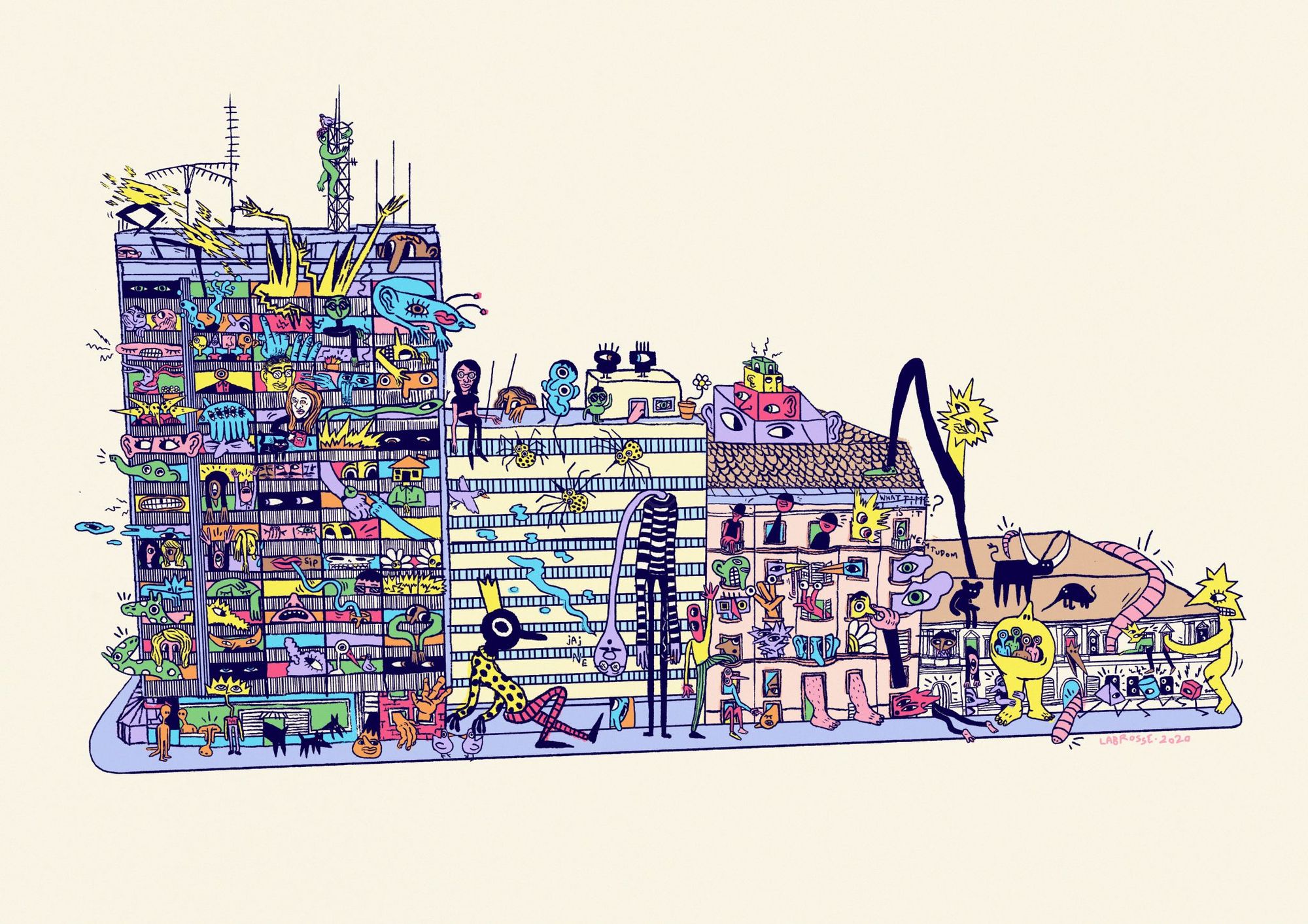Lightning rod-induced electric boogie and world record cell division on the top floor, making spatial geometric shapes running on legs to escape the children going berserk look like nothing. Mr. Striped Long-Neck in a narcoleptic swoon at quarter past six sharp. In the meantime, black bull hooves are tapping on the imaginary tiled floor. The last day of the quarantine. Four floors of happiness at Pápa tér in the capital. The special characters of Daniel Labrosse take over the buildings of Budapest here, on HYPEANDHYPER! Look at the picture, and try to find the small potted flower this time in the houses of II. János Pál pápa tér!
“This building complex is special in my Budapest by Labrosse series because it is not special at all in terms of architecture. There are many similar houses across the city, but what captivated my attention in these houses is that they form a stair-like shape standing next to each other. The buildings keep getting higher started from the oldest to the newest. This makes us look at the otherwise quite ugly buildings from a fresh perspective, and discover some sort of playfulness in them” – Dani told us about his latest work.


Your task this time: find the little potted flower on the image!
II. János Pál pápa tér
Together with today’s Teleki tér, the area used to give home to the animal market in the 18th century, however, almost nobody remembers the name Lóvásár or Újvásár tér. Everyone thinks of it rather as Köztársaság tér, but slowly we are also getting used to the name II. János Pál pápa tér, which was given to the area in the course of the public space renaming program after 2010. Its development was practically owing to the two factories that settled in its vicinity: this is where the first gas factory of Pest was established in 1856, and then MÁV-Machine Factory also commenced its operation on the square in 1868. To that end, the area became one of the centers of the early workers’ movement – this is where the first open workers’ assembly was held in the capital, for example. In the early 20th century, three factories, twenty plants and fifty-four stores operated on the square. Even though it served as the location of many significant historical moments over time, it never became a highlighted spot or meeting point in the capital. Today, it is one of the stops of metro line M4.
The most impressive building of Pápa tér (as frequently referred to in Józsefváros) is undoubtedly the former People’s Opera built in 1911, today known as Erkel Theater, which has been the chamber theater of the Hungarian State Opera House since 2013 – with its 2400 seats, it is the largest permanent theater of Hungary. One of the most famous buildings is the Hungarian Working People’s Party (later the Hungarian Socialist Party) headquarters located at II. János Pál pápa tér 25 and 26, established from the originally eclectic residential buildings of the square, which was the target of the siege of 1956. The building is currently waiting to be demolished. At the same time, II. János Pál pápa tér 7 gives home to the Hungarian Intellectual Office (formerly known as Trademark Office – the Ed.), also featured on Dani Labrosse’s drawing, which is the government agency responsible for the protection of intellectual property, and particularly the protection of industrial property rights and copyrights.
In our one-year-long article series titled Budapest by Labrosse, the special characters of Daniel Labrosse take over iconic buildings of Budapest here, on HYPEANDHYPER! Come, take a look and play with us!

Pantone created an application to help us identify colors

Beautiful blue glass made out of invasive species of mussels










